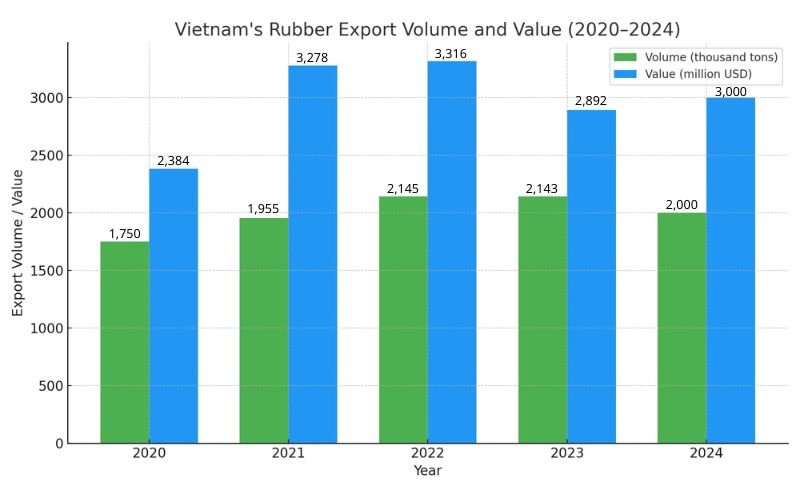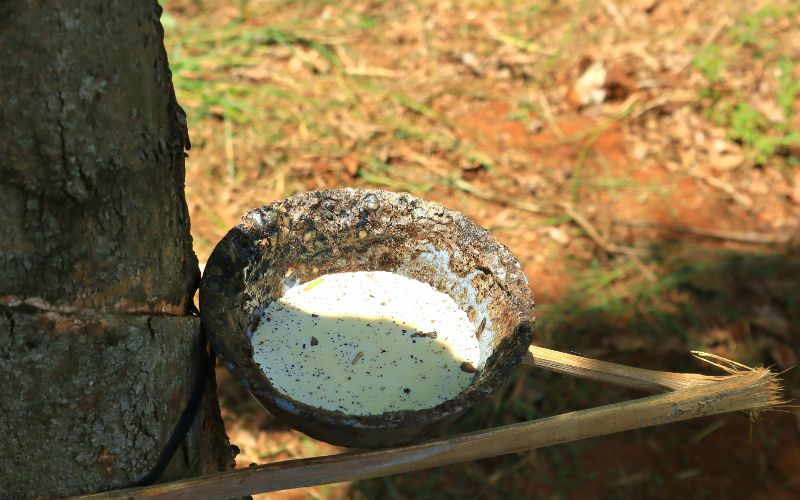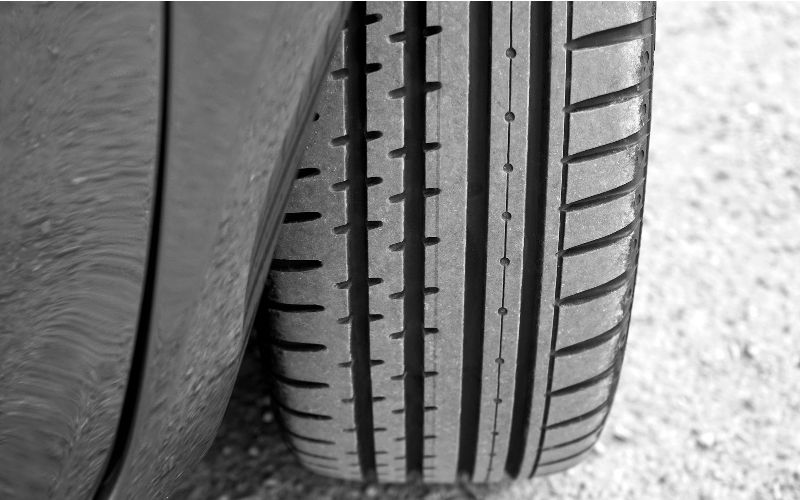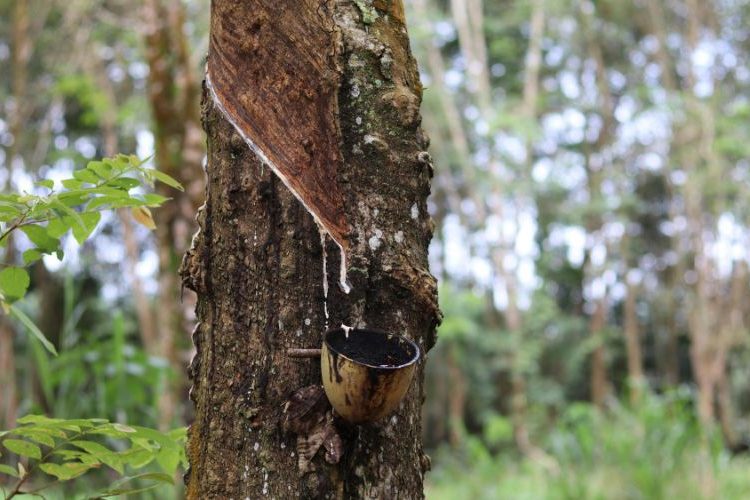From natural latex to finished rubber goods like truck tires and heavy-duty marine gaskets, Vietnam rubber has been showing up in supply chains all over the world for years now. Lately, more and more buyers are turning to Vietnam as a solid alternative to traditional sources like Thailand. Why? Stable supply and a growing pool of export-ready suppliers.
So if you’re thinking about sourcing rubber from Vietnam but not quite sure where to start, you’re in the right place. We’ll show you which suppliers are worth checking out, and what to look out for to avoid surprises when it’s time to ship.
The Rise of Vietnam’s Rubber Industry
Over the past year, Vietnam’s natural rubber exports hit almost 3.4 billion dollars. That’s a new national record and enough to put the country in the global top three, right behind Thailand and Indonesia.
So what’s driving this quiet climb? Vietnam’s rubber is valued for its high elasticity, low ash content, and consistent viscosity. The quality advantage comes from not only favorable climate of consistently warm temperatures and high humidity but also improved harvesting and processing techniques adopted by major producers over the last decade.
Additionally, many Vietnamese rubber exporters are already aligning with the EU’s anti-deforestation rules (EUDR). This makes them more appealing to buyers in stricter markets.
On the demand side, China is still the biggest buyer by far, taking in more than two-thirds of Vietnam’s rubber exports. But other countries like India, South Korea, and the US are paying closer attention now. If things stay on track, the Vietnam Rubber Association expects exports could rise another 10 percent this year.

Common Types of Vietnamese Rubber
Now that you’ve got a sense of where Vietnam’s rubber mostly comes from, let’s talk about the actual types you’ll come across — and more importantly, what they’re used for.
- SVR 10: If you’re after something tough and dense, this is the one. SVR 10 is made from a mix of latex and rubber scrap, so it’s not as refined, but it’s great for heavy-duty stuff. Most folks use it for tire retreading or shock-absorbing pads in trucks and machinery.
- SVR 3L: It is of good purity, light color, and resists wear and tear nicely. Vietnam’s customers primarily apply it to uses like car tires, conveyor belts, electric cables, and some medical-grade rubber products.
- SVR CV60: Strength and consistency is the motto of this type. It has consistent Mooney viscosity (processing aid) and can take pressure, literally. Suitable for truck tires, aircraft parts, or anything that has to endure abuse.
- RSS3: These are smoked rubber sheets – kind of old-school but still widely used. They’ve got a smooth surface and even thickness, usually in a pale or milky color. You’ll see them in shoe soles, rubber tubing, and general molded products.
- Concentrated Latex: This is what mattress and glove manufacturers love. It’s soft, clean, breathable, and super elastic. If you’re in the latex foam or medical glove game, this is probably what you’re after.
- Natural + Synthetic Blends (HS 400280): Want something with the bounce of natural rubber, but more heat- and oil-resistant? These blends give you that balance. They’re used in all sorts of technical parts – especially automotive – where performance under pressure matters.
Vietnam also manufactures other types like SVR 20, SVR CV50, and even natural-synthetic rubber blends. These are less in demand but can perform well depending on what you’re making.
Key Rubber-Producing Areas in Vietnam
Regarding Vietnam rubber sourcing map, most of the country’s rubber comes from the Southeast region (especially Binh Phuoc and Binh Duong). Together, they make up more than half of the country’s total rubber-growing area. After that, the Central Highlands is the next biggest source.
1. Binh Phuoc
This province has over 240,000 hectares of rubber trees and several big processing factories. Every year, it brings in tens of millions of dollars in rubber exports. The main products here are Latex HA/LA, SVR 10, and SVRL, with buyers coming from China, the US, and the EU.
So why do so many importers choose Binh Phuoc? Rubber here is famous for steady year-round supply thanks to fertile red soil and reliable weather. outputs are high-volume natural rubber like SVR 10 and SVR 3L. It suits businesses looking for stable volume and efficient logistics.
2. Binh Duong
Binh Duong has around 130,000 hectares of rubber trees, which is already a lot. But what surprised us even more was the output. In just the first half of last year, the province produced over 57,000 tons of rubber. Most of that was SVR 3L, which seems to be their main focus.
Apart from China, South Korea and Turkey have also been regular buyers from this region for quite some time. It’s also important to note that a large part of the rubber here comes from small farmers rather than big plantations. Full traceability can be harder to guarantee.
3. Tay Nguyen (Central Highlands)
The Central Highlands comes with over 64,000 hectares of rubber trees, based on what we’ve gathered so far. What makes this region special is the quality of its rubber cream. Many factories here produce latex with very few impurities, smooth and clean. It’s the kind of rubber that’s often used in premium latex mattress production, where consistency really matters.
One downside, though, is the terrain. The land here is quite hilly and broken up, which can make transport a bit difficult. Some farms or factories are harder to reach, and that might mean higher shipping costs, depending on where your supplier is located.

What Are the Popular Rubber Products Manufactured in Vietnam?
Rubber in Vietnam isn’t just shipped out as raw material. A growing part of the industry is actually in finished products. So if you’re thinking about sourcing something beyond raw rubber, here’s a good place to start:
1. Rubber Tires
If you’re looking into rubber-based products, tires are probably one of the first things to check out. We’re talking about ones for cars, motorbikes, bicycles, and even heavy machinery. Most of them are made from a mix of natural rubber and synthetic rubber, like SBR (Styrene Butadiene Rubber) or BR (Butadiene Rubber), depending on the type of performance needed.
What’s interesting is how quickly Vietnam’s tire exports are rising. Just last year, Vietnam actually passed China to become the third-largest exporter of truck and bus tires to the EU. Vietnamese tires now meet strict European standards, such as (EC) No 661/2009 and (EU) No 2020/740.

2. Rubber-Coated Gloves
Rubber-coasted gloves are mostly made from natural rubber (latex) and synthetic rubber, especially nitrile. These are shipped in large volumes to countries like the US and those in the EU, mostly for use in industries like metalwork, mining, and construction.
What makes them popular? They’re tough, grip well, and are surprisingly breathable. A lot of customers say they’re comfortable even after long hours of use. Some factories here can handle orders of hundreds of thousands of pairs, which is great if you’re buying in bulk.
3. Natural Latex Mattresses
Natural latex mattresses made in Vietnam aren’t just a recent trend. Brands like Lien A and Kymdan have been exporting to the US, Canada, Australia, and South Korea for years.
These mattresses are made from 100% natural rubber latex, mostly from Hevea trees. They’re soft, supportive, and known to help with back comfort. Moreover, they’re non-toxic, have a clean, natural smell, and meet international standards like ECO and LGA, which helps a lot when exporting to stricter markets.
4. Rubber Gaskets
Rubber gaskets might not be as widely known as tires or gloves, but they’re still a big part of Vietnam’s rubber exports. You’ll find O-rings, X-rings, and different kinds of backing seals made from synthetic rubber like EPDM, NBR, or Neoprene.
These are used in all sorts of industries, from automotive to medical and electronics. Vietnam has a wide range of suppliers for these parts, and many are flexible with customization or bulk requests.
Top 5 Vietnam Rubber Sourcing Companies and Manufacturers
So, if you’re looking to source either raw rubber or finished rubber-based products from Vietnam, who should you be talking to? Here are a couple of reliable names you’ll definitely want to keep on your radar:
1. Dau Tieng Rubber Corporation
This company is based in Binh Duong and has been around for a long time. It actually started as a French Michelin rubber plantation back in the 1920s. Now it’s part of the Vietnam Rubber Group and works with big names like Goodyear and Weber & Schaer.
They grow and process different types of natural rubber, like SVR L, SVR 3L, SVR 5, SVR 10, and more. You’ll also find that they’ve got key certifications like ISO 9001:2015 and ISO 14001:2015. If you’re worried about EUDR or traceability, they’ve got systems in place to support that.
2. Phuoc Hoa Rubber JSC
Also in Binh Duong, Phuoc Hoa is another major name in the industry. They manage over 15,000 hectares of rubber plantations and export large volumes every year. Countries like Japan, Germany, France, and the US have been working with them for ages.
Looking for CV50, CV60, Latex, or SVR 20 with international standards? This is a supplier worth checking out. They’ve got a strong track record and can handle big orders without issues.
3. Da Nang Rubber JSC (DRC)
DRC is one of the biggest names in tire manufacturing in Vietnam. They’ve been doing this for over 50 years, and their factory is based in Da Nang. Over time, they’ve kept improving their machines and production lines, so their tires now meet strict global standards like E4 (Europe), DOT (USA), and JIS (Japan).
So, what exactly do they offer? They mostly make tires for trucks of all sizes, including PRC, radial, and bias tires. They also offer other rubber items like marine fenders, rubber sheets (ranging from 2mm to 10mm), and cylindrical bumpers used in ports and construction.
4. Sao Vang Rubber JSC (SRC)
SRC is another well-known tire company, but based up north in Hanoi, with its main factory in Vinh Phuc. They produce tires and tubes for cars, motorbikes, bicycles, and even some special-purpose vehicles. Besides that, they also supply rubber products for construction and shipping, like P-shaped seals, conveyor belts, and ship bumpers.
One thing that makes SRC stand out is that they’re currently the only company in Vietnam with the technology and capacity to produce aircraft tires. They’ve also been certified by BVQI in the UK under ISO 9002.
5. Dak Lak Rubber Investment JSC (DRI)
DRI is based in Vietnam’s Central Highlands and is known for focusing on sustainable and responsible farming. They supply over 18,000 tons of rubber each year to both local and global buyers. Most of what they produce includes block rubber types like SVR 3L, SVR 5, SVR 10, and SCVR 20.
Their rubber meets Vietnamese quality standards (TCVN 3769:2016), especially when it comes to things like ash, nitrogen, and volatile content. If you’re looking for a partner who cares about both quality and long-term sustainability, DRI is definitely worth considering.
How Much Is Vietnam Rubber? A Look at Prices and MOQs
So now that you’ve got a better idea of the main types of rubber Vietnam offers, the next big question is probably something like: “What’s the Vietnam rubber sourcing cost, and how much do I have to buy?” Fair enough.
Prices, of course, can shift a bit depending on the market and your relationship with the supplier, but this snapshot should give you a good ballpark:
| # | Type of Vietnamese Rubber | Typical MOQ | Estimated FOB Price (USD/ton) |
| 1 | SVR 10 | Usually 100 tons | About $1,850 |
| 2 | SVR 3L | Between 80 and 100 tons | Roughly $1,960 |
| 3 | SVR CV60 | From 60 to 100 tons | ~$2,060 |
| 4 | RSS3 | Normally 100 tons | Approx. $2,090 |
| 5 | Latex HA/LA | 80 tons or above | Nearly $1,280 |
| 6 | Code HS 400280 | Starting from 20 tons | ~$1,370 – $1,630 |
Tips to Know Before Buying Rubber from Vietnam
There are a few important documents you’ll want to sort out early when working with Vietnamese rubber suppliers. Trust us, getting them right from the start can save you a lot of customs headaches later.
- Eco-Friendly Certifications: A lot of buyers today want proof that the rubber comes from sustainable sources. Just ask your supplier if they have FSC or PEFC certification. That means the rubber was taken from well-managed plantations that don’t harm the environment or local communities.
- Traceability (Chain of Custody): This shows where the rubber comes from and tracks it through the supply chain. Some big brands require this, especially in the EU or the US.
- Controlled Wood: This is about reducing the risk of buying rubber or wood from bad sources. If you see Controlled Wood on a document, it means extra steps were taken to avoid illegal or harmful supply chains. And if you’re selling into Europe, make sure the supplier knows about the EU Deforestation Regulation.
- Phytosanitary Certificate: This one’s more technical, but important if you’re importing raw latex or rubber goods. It proves the shipment is free from pests and diseases.
- Quality Certifications: Finally, it helps if your supplier has ISO 9001 for quality and ISO 14001 for environmental management. Most big rubber suppliers in Vietnam already have them, but it’s worth asking.
Sourcing Made in Vietnam Rubber with VinaSources
If you’re looking for reliable rubber suppliers in Vietnam but are not sure where to start, VinaSources is here to make things easy. It’s a one-stop B2B platform that connects international buyers directly with trusted Vietnamese rubber manufacturers – no middlemen, no guesswork.
Here’s how VinaSources makes rubber sourcing from Vietnam more straightforward and efficient:
- Work with verified Vietnam rubber suppliers: All suppliers on the platform are pre-checked for export licenses, factory capacity, and the right certifications (like FSC, ISO, etc.). So you’re not wasting time with unqualified vendors.
- Simple RFQ process: Just send in your request with the quantity, rubber type, target price, and packaging needs – and we’ll help match you with the right supplier.
- Support from start to finish: From handling logistics to paperwork and supplier follow-ups, VinaSources takes care of it all so you can focus on your business.
Ready to get started? Reach out today and make your Vietnam rubber sourcing smoother and more reliable.
